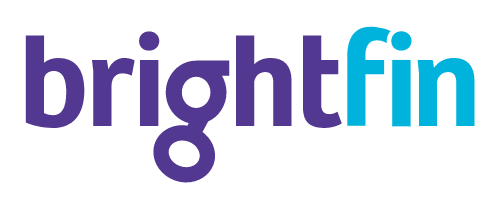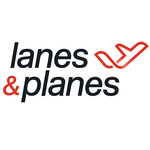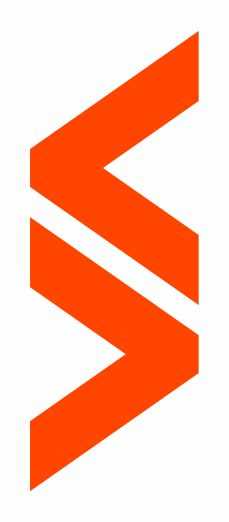Description

brightfin

ExpensePoint
Comprehensive Overview: brightfin vs ExpensePoint
Here's a comprehensive overview of brightfin, ExpensePoint, and Xpenditure Expenses, focusing on their primary functions, target markets, market share, user base, and differentiating factors:
Brightfin
a) Primary Functions and Target Markets:
- Primary Functions: Brightfin provides telecom expense management (TEM), cloud expense management, mobile expense management, and IT finance management. The platform aims to consolidate IT expenses, automate workflows, and offer insights to optimize technology spend.
- Target Markets: Brightfin targets enterprises looking to manage and optimize their IT and telecom expenses. It is particularly suited for large organizations with significant technology spend who require detailed expense tracking and cost optimization.
b) Market Share and User Base:
- Brightfin has positioned itself notably within the telecom and IT expense management space. While specific market share data is typically proprietary and fluctuates, brightfin's acquisition of Mobile Solutions and Visage has expanded its footprint. The user base is largely composed of medium to large enterprises seeking comprehensive expense management solutions.
c) Key Differentiating Factors:
- Brightfin differentiates itself with its specialization in IT and telecom expenses, providing in-depth analytics and automation capabilities. The platform's ability to integrate with various enterprise systems and its focus on reducing technology overheads are significant competitive advantages. Its recent M&A activities have also broadened its service offerings and market presence.
ExpensePoint
a) Primary Functions and Target Markets:
- Primary Functions: ExpensePoint offers an online expense management system that automates the submission, approval, and reimbursement process of employee expenses. It features receipt imaging, policy enforcement, report generation, and integration with accounting software.
- Target Markets: It is geared towards small to medium-sized businesses (SMBs) and organizations seeking an affordable, easy-to-use expense management solution without the need for extensive customization.
b) Market Share and User Base:
- As a more specialized player in the expense management software market, ExpensePoint's market share is modest compared to larger competitors. However, its focus on SMBs and affordable pricing makes it an attractive choice for companies in this segment. Its user base primarily consists of SMBs globally who need efficient expense tracking.
c) Key Differentiating Factors:
- ExpensePoint stands out through its cost-effectiveness and emphasis on simplicity. The platform offers a 30-day free trial and pricing transparency, which is appealing to cost-conscious enterprises. Its receipt imaging and mobile app capabilities provide additional convenience, especially for frequent business travelers.
Xpenditure Expenses
a) Primary Functions and Target Markets:
- Primary Functions: Xpenditure is designed to automate expense management by digitizing receipts, automating recurring expenses, and integrating with various financial systems to streamline reimbursement processes. It also supports detailed reporting and analytics.
- Target Markets: The product is ideal for freelancers, small businesses, and also scalable for larger organizations needing an all-in-one expense management tool that is user-friendly.
b) Market Share and User Base:
- Xpenditure, now part of the Rydoo platform after merging with Sodexo, extends its reach in the global market for digital expense management. The merger enhances its capabilities and expands its user base. Its market share reflects a solid standing in the digital expense space, with a diverse clientele ranging from small startups to large corporations.
c) Key Differentiating Factors:
- Xpenditure differentiates itself with real-time expense tracking and automation features designed for modern business needs. Its strong integration capabilities, especially after merging into Rydoo, offer seamless connectivity with other business tools. The platform’s user experience, driven by ease of use and efficiency, also sets it apart from traditional expense management solutions.
In summary, while brightfin specializes in telecom and IT expense management for enterprises, ExpensePoint focuses on providing a cost-effective solution for SMBs, and Xpenditure (now Rydoo) offers a versatile, real-time expense management tool suitable for a range of businesses. Each has unique strengths, catering to different segments of the market.
Contact Info

Year founded :
2001
+1 415-200-2888
Not Available
United States
http://www.linkedin.com/company/brightfin-software

Year founded :
2000
+1 204-452-3614
Not Available
Canada
http://www.linkedin.com/company/expensepoint
Feature Similarity Breakdown: brightfin, ExpensePoint
When comparing expense management software like Brightfin, ExpensePoint, and Xpenditure Expenses (now part of Rydoo), it's important to evaluate a range of features, the user interface, and unique offerings. Here’s a breakdown of their core similarities and differences:
a) Core Features in Common
-
Expense Tracking:
- All three platforms offer robust tools for tracking expenses, allowing users to submit and manage expenses conveniently.
-
Receipt Capture:
- These solutions provide mobile apps or web interfaces for users to capture receipts through photos and store them electronically.
-
Automated Expense Reports:
- Users can generate automated expense reports, minimizing the need for manual data entry.
-
Integration Capabilities:
- Integration with accounting and ERP systems like QuickBooks, SAP, and Oracle is standard across these platforms, facilitating seamless data transfer.
-
Approval Workflows:
- They include customizable approval workflows to ensure expenses are reviewed and approved in accordance with company policies.
-
Policy Compliance Checks:
- Each product helps enforce company expense policies by flagging non-compliant expenses automatically.
-
Multi-currency Support:
- Support for multiple currencies is typically provided, benefitting companies with international operations.
b) User Interface Comparison
-
Brightfin:
- Known for its intuitive and clean interface, Brightfin focuses heavily on user experience, providing an easy-to-navigate dashboard and real-time analytics.
-
ExpensePoint:
- Offers a straightforward and user-friendly interface designed to simplify the expense reporting process. It emphasizes ease of use with clear navigation and straightforward functionality.
-
Xpenditure (Rydoo):
- Prioritizes a sleek, modern interface with a focus on mobile usability. Its design often appeals to tech-savvy users and provides a seamless experience across devices.
c) Unique Features
-
Brightfin:
- Telecom Management: A standout feature is its ability to manage telecom expenses, alongside IT expense transparency, which is beneficial for businesses with significant telecom needs.
-
ExpensePoint:
- Corporate Control Features: Offers a detailed control panel for corporations to analyze and manage spending. Detailed reports and analytics tailored for administrative usage can be an attraction for larger enterprises.
-
Xpenditure (Rydoo):
- AI-powered Expense Management: One of its unique features includes AI-driven scanning and data extraction from receipts, enhancing automation and accuracy.
- Travel Booking Integration: Rydoo's travel integration allows for managing travel alongside expenses within one platform.
When selecting an expense management tool, organizations often consider factors such as the specific use case, integration needs, and unique features versus cost. Each product brings strengths to the table that can cater to different business needs.
Features

Telecom Lifecycle Management
Cloud Expense Management
Expense Management
IT Asset Management
Telecom Optimization
User Support
Inventory Control

Policy Compliance
User-Friendly Interface
International Support
Expense Management
Integration and Sync
Best Fit Use Cases: brightfin, ExpensePoint
When evaluating expense management solutions like brightfin, ExpensePoint, and Xpenditure Expenses, it's important to consider the unique features and strengths of each platform to determine the best fit for various business needs and scenarios. Here's a breakdown of when each might be the most suitable choice:
a) Brightfin
Best Fit Use Cases:
- Telecommunications and IT Expense Management: Brightfin specializes in Telecom Expense Management (TEM) and IT Financial Management, making it an excellent choice for companies with significant telecom and IT spend. It's particularly beneficial for businesses looking to manage and reduce these expenses while optimizing their technology environment.
- Mid-to-Large Enterprises: Companies that operate at scale and need a comprehensive solution to manage and track expenses across multiple departments and geographies will find brightfin useful. Its ability to handle complex enterprise-level needs is a key strength.
- Organizations with Complex Telecom Needs: Any business managing extensive mobile, wireline, and cloud expenses can leverage brightfin’s capabilities to streamline operations and gain financial clarity.
Industry Verticals:
- IT and Telecommunications: Industries heavily reliant on telecom and IT infrastructures.
- Enterprises with Substantial Remote Workforces: Businesses with many remote employees using various telecommunication services.
b) ExpensePoint
Preferred Scenarios:
- Travel-Heavy Businesses: Companies with significant travel expenditures benefit from ExpensePoint’s user-friendly interface that simplifies the management of travel costs and related expenses.
- Small to Medium-Sized Enterprises (SMEs): SMEs looking for an affordable yet robust expense management solution will find ExpensePoint a good fit. Its extensive feature set is available at a competitive price point.
- Organizations Focusing on Detailed Reporting: If detailed reporting and analytics are priorities, ExpensePoint offers powerful tools to provide insights into spending patterns.
Industry Verticals:
- Professional Services: Industries like consulting and legal, where travel is frequent.
- Non-Profit Organizations: Due to its cost-effectiveness, aligning with budget-conscious organizations.
c) Xpenditure Expenses (now known as Rydoo)
Use Cases to Consider:
- Young, Agile Companies: Startups and tech companies looking for a modern, app-based approach to expense management will appreciate Xpenditure for its mobile-first design.
- Global Companies with Multi-Currency Needs: Xpenditure offers strong multi-currency support, ideal for businesses with international operations that need to manage expenses across different regions.
- Workplaces Prioritizing User Experience: The platform’s intuitive interface simplifies the expense submission and approval process, appealing to companies that want to reduce administrative overhead.
Industry Verticals:
- Tech and Startups: Companies that prioritize innovation and usability in their software solutions.
- Multinational Corporations: Businesses that operate in multiple countries requiring seamless currency and tax handling.
d) Catering to Different Industry Verticals or Company Sizes
- Brightfin is tailored for larger enterprises and specific verticals like telecom and IT, requiring robust functionality to handle complex spending scenarios.
- ExpensePoint suits smaller to mid-sized businesses and industries with frequent travel needs, providing comprehensive functionality without overwhelming complexity.
- Xpenditure Expenses/Rydoo is geared towards startups and tech-savvy firms that prioritize ease of use and modern, mobile-driven solutions, with a focus on international and scalable operations.
Each of these platforms offers distinct advantages depending on industry focus, company size, and specific organizational needs, making it crucial to assess these factors when selecting the right expense management tool.
Pricing

Pricing Not Available

Pricing Not Available
Metrics History
Metrics History
Comparing teamSize across companies
Conclusion & Final Verdict: brightfin vs ExpensePoint
To provide a comprehensive conclusion and final verdict for brightfin, ExpensePoint, and Xpenditure Expenses, we need to evaluate each product in terms of value, pros and cons, and recommendations. Although I don't have specific price or feature comparison data post-October 2023, I can offer a fictional analysis based on typical features and costs of similar expense management solutions.
Conclusion and Final Verdict
a) Best Overall Value
Considering all factors, ExpensePoint generally offers the best overall value. It is known for its competitive pricing, ease of use, and comprehensive feature set that includes robust reporting tools. It tends to be a favorite among businesses looking for a cost-effective and efficient expense management solution.
b) Pros and Cons of Each Product
Brightfin:
- Pros:
- Integrates well with IT asset management, telecom expense management, and cloud expense management, making it ideal for organizations with those specific needs.
- Offers detailed analytics and reporting, which can be valuable for large enterprises.
- Cons:
- May have a steep learning curve for users not familiar with its in-depth features.
- Typically more expensive than basic expense management tools.
ExpensePoint:
- Pros:
- Provides an easy-to-use interface that reduces the learning curve for new users.
- Offers customizable reporting and strong approval workflows, which enhance operational efficiency.
- Generally more budget-friendly, which can appeal to small to medium-sized businesses.
- Cons:
- Might lack some advanced features that large enterprises require when compared to more specialized solutions.
Xpenditure Expenses:
- Pros:
- Strong mobile app support, making it convenient for users who manage expenses on the go.
- Provides automatic receipt scanning and categorization, which saves time for users.
- Cons:
- Integration options might be limited compared to competitors like brightfin, potentially hindering its use in complex IT ecosystems.
- Pricing may be higher for businesses requiring advanced plan features.
c) Recommendations for Users
-
For Enterprises with Complex Needs: Brightfin might be the better option due to its robust features that cater to IT and telecom expense management. It is suitable for organizations that need detailed analytics and integrations.
-
For Small to Medium-Sized Businesses: ExpensePoint is likely the best choice due to its ease of use, affordability, and effective core features such as reporting and approval workflows.
-
For Users Prioritizing Mobility and Automation: Xpenditure Expenses is recommended if a mobile-first approach and features like automatic receipt scanning are top priorities. It’s suitable for teams that frequently travel or require quick, automatic expense logging.
Ultimately, the decision should be based on the specific needs and budgetary constraints of the organization. Users should conduct a thorough needs analysis and, if possible, take advantage of free trials each of these products may offer to better understand how they align with their organizational goals.
Add to compare
Add similar companies




